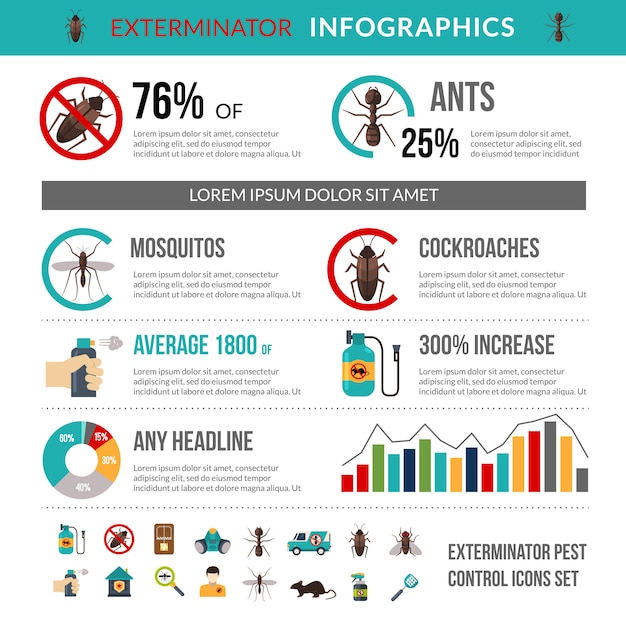The Role Of Parasite Exterminators In Environmental Sustainability
The Role Of Parasite Exterminators In Environmental Sustainability
Blog Article
Published By-Bjerg Vang
You may believe that bug exterminators are just interested in eliminating insects, but their role surpasses that. They play a crucial component in environmental sustainability.
By utilizing integrated insect administration techniques, they not only do away with insects but also secure biodiversity.
Furthermore, they utilize lasting insect extermination methods to reduce environmental threats.
So, following time you wonder about the relevance of parasite exterminators, remember their payment to a greener and much healthier world.
The Value of Integrated Bug Administration
You must understand the significance of integrated pest management in keeping a sustainable setting.
Integrated Bug Management (IPM) is an approach that focuses on stopping and controlling parasites while reducing the use of dangerous chemicals. By applying IPM approaches, you can efficiently handle bug populaces without creating injury to the atmosphere.
One key facet of IPM is using organic controls, such as predators and parasites, to normally control pest populaces. This lowers the requirement for chemical pesticides, which can have detrimental results on wild animals and ecosystems.
Furthermore, DIY rodent control tips making use of cultural and physical controls, such as plant turning and exemption methods, to stop bugs from coming to be a problem in the first place.
Shielding Biodiversity Via Bug Control
We can protect biodiversity via effective insect control approaches that prioritize the preservation of natural environments. By using liable pest control techniques, we can safeguard and keep the delicate balance of types within our environment. Below are three ways in which insect control adds to safeguarding biodiversity:
- ** Preserving indigenous plants and animals ** - By targeting intrusive varieties that threaten native plants and animals, insect control aids ensure the survival of aboriginal species and keeps the natural diversity of communities.
- ** Protecting against the spread of diseases ** - Managing parasites such as mosquitoes and ticks decreases the risk of illness spreading to wild animals populaces, protecting biodiversity and stopping prospective outbreaks.
- ** Saving jeopardized types ** - By handling insects that victimize or take on jeopardized species, parasite control efforts can improve the chances of survival and promote the recuperation of susceptible populations.
Via responsible pest control approaches, we can actively contribute to the conservation of biodiversity and the sustainability of our environment.
Mitigating Environmental Risks With Lasting Pest Extermination Methods
By using lasting bug elimination approaches, you can effectively minimize environmental dangers while ensuring the safety and security and health of both humans and the natural ecosystem. Typical insect control methods commonly include the use of hazardous chemicals that can have harmful impacts on the environment.
However, lasting bug extermination approaches concentrate on minimizing these risks by using environmentally friendly alternatives. For instance, integrated parasite management (IPM) approaches focus on making use of non-toxic and naturally degradable items, in addition to all-natural killers to control pest populations. This strategy not only lowers the negative effect on the environment but likewise helps to keep the fragile equilibrium of the environment.
Additionally, lasting parasite elimination techniques promote the conservation of biodiversity by targeting specific insects without harming beneficial organisms. By taking on https://www.goskagit.com/anacortes/news/lone-wild-animal-babies-dont-always-need-rescue/article_64d2db48-00b4-11ee-8038-f39b49c2e413.html , you can add to an extra sustainable and environment-friendly strategy to pest control.
Verdict
You are the pest exterminator, the guardian of nature's consistency. With integrated pest management, you stabilize the fragile ecosystem, making sure the survival of diverse types.
With lasting approaches, you minimize ecological dangers, keeping the fragile equilibrium intact.
Like a symphony conductor, you orchestrate the rhythm and circulation, shielding the biodiversity that dances in ideal harmony.
With every action you take, you create a world where nature prospers, where parasites pull back, and where sustainability reigns supreme.
